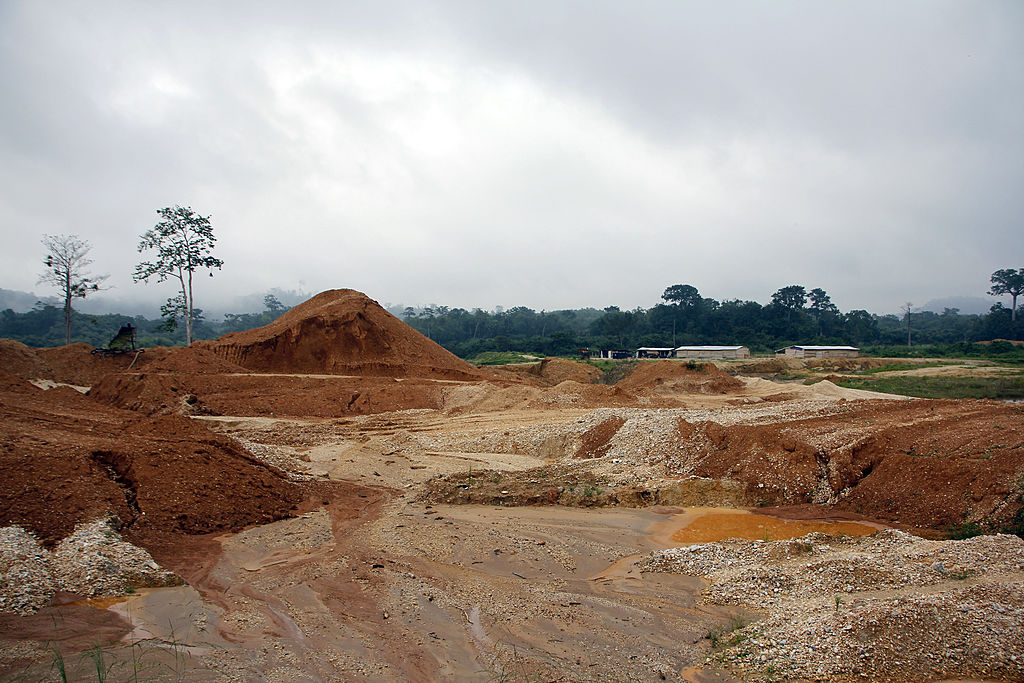Woodcarvers in China’s eastern city of Dongyang produce billions of dollars in expensive furniture every year, much of it made from rosewood. While wealthy people enjoy the highly prized chairs and tables, African communities pay the price in the form of environmental destruction.
Across the continent, China’s drive for natural resources — from cobalt and gold to rubber and rosewood — has displaced communities, deforested the landscape and devastated livelihoods.
“Chinese infrastructure and mining projects have opened previously undisturbed forest and conservation areas, fragmented habitats and weakened the ecological integrity of critical landscapes,” researchers led by Ebagnerin Jérôme Tondoh, an expert in ecology and sustainable land management at Côte d’Ivoire’s Nangui Abrogoua University, wrote in a recent study published by the Atlantic Council.
Roads built to access mines frequently cut through undisturbed forests, opening them up to logging or to the development of rice or rubber tree plantations. The use of heavy machinery in small-scale mines severely damages watersheds and ecosystems. In Cameroon, a sprawling Chinese rubber plantation drove local people from their homes and threatens the integrity of a UNESCO-identified nature preserve.
Much of the worst damage has been in the tropical forests of West and Central Africa, where weak regulation and runaway corruption help Chinese companies exploit legal loopholes or get around export bans and international agreements intended to protect natural resources and people living nearby.
Rosewood has become the symbol of China’s ecological impact on African nations. The timber is highly prized in China, where rosewood furniture is an important status symbol. In 1998, the Chinese government restricted local harvests after its own native rosewoods were driven to the brink of extinction.
China’s demand for rosewood has made it the most trafficked illegal wildlife product in the world. West African countries shipped more than $2 billion in rosewood to China between 2017 and 2022, according to the Environmental Information Agency.
Studies estimate that 70% of rosewood logging in Ghana is illegal, as is 65% in Cameroon and 56% in Nigeria.
The Gambia, which exhausted its own native rosewood forests and banned exports in 2022, ships millions of dollars in rosewood to China every year. The wood is smuggled into the country from southern Senegal, where illicit sales support rebel groups. Along the way, the wood is intentionally mislabeled or hidden among other forest products and later reported on China’s import rosters.
The illicit rosewood trade is just part of the environmental damage China has created in its pursuit of natural resources:
- In Zambia, the collapse of a dam at the Chinese-run Sino-Metals Leach Zambia copper mine in February sent 50 million liters of toxic materials into the Kafue River, killing fish, destroying crops and threatening the water supply for 60% of the country’s population.
- In Liberia, a Chinese gold mine poisoned the Cavalla River between Côte d’Ivoire and Liberia in 2023, prompting Liberian authorities to close the mine and fine the operator, China Union Co. Iron Ore Mines. The river remains off-limits to communities that once relied on it.
- In the Democratic Republic of the Congo, Chinese company Fodeco engaged in illegal logging in the Miombo woodlands area in 2022. The cutting went on despite a 20-year ban on new logging operations. A conflict with locals over pay resulted in many of the cut logs being left to rot on the ground.
Analysts say that China’s environmental destruction in African nations has effects that cascade through society, ultimately increasing conflict and insecurity, researchers led by Abosede Omowumi Babatunde wrote in another study published by the Atlantic Council.
“The loss of land for farming bananas, rice, potatoes, and other traditional crops undermines food security, fuels social tension, and stokes conflicts between local communities and Chinese miners,” the researchers wrote. “The impacts of these activities are not only ecological but also social.”

